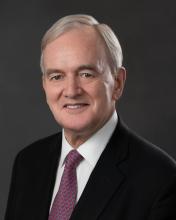You are here
The overwhelming case for CBDCs
Apr 19,2023 - Last updated at Apr 19,2023
NEW YORK — In its latest World Economic Outlook, the International Monetary Fund establishes a plausible case that once inflation has been squeezed out of the system, interest rates in the advanced economies (and in many emerging markets) will return toward their extremely low pre-pandemic levels. That would be in keeping with the downward trend in the natural real interest rate since the early 1980s, itself the result of aging populations and disappointing total factor productivity growth.
The natural real interest rate reflects the balance of planned savings and capital formation under the theoretical conditions of full employment and on-target inflation. True, nothing is ever certain in the real world. The larger government budget deficits become, the more upward pressure there will be on the natural rate. While aging societies tend to save more, truly old societies save less. And one also must consider the effects of a possible great “decoupling” of the global economy and the rise of US-centered and China-centered blocs. That could well reduce capital inflows for the advanced economies, boosting their natural rates.
Still, on balance, it is reasonable to assume that in two or three years, we will return to a world in which advanced-economy central banks’ nominal policy rates are regularly constrained by the effective lower bound (ELB). A zero nominal interest rate on currency (cash) sets a near-zero floor under the central bank policy rate. A very low natural real interest rate and low inflation make it likely that the ELB will be a binding constraint. Even though nominal policy rates have risen significantly since 2020, with the US Federal Reserve’s policy rate now at 4.75-5 per cent real (inflation-adjusted) short-term policy rates are still barely positive in the United States, and they remain materially negative in most other advanced economies. According to the Federal Reserve Bank of Cleveland, the US ten-year real interest rate was only around 2 per cent and that was its highest level since the 2008 financial crisis.
If the Fed again faces a situation where the federal funds rate is constrained by the ELB, it will have lost its most effective instrument for providing stimulus to counter below-target inflation or excessive unemployment. Without being able to cut rates further, its only remaining tools will be quantitative easing (purchasing high-quality assets), qualitative easing (purchasing lower-grade financial claims), yield curve control (purchasing bonds of a certain maturity at whatever scale needed to keep their yields within a certain range), and forward guidance.
The bad news is that none of these options is as effective as interest-rate cuts in stimulating aggregate demand. Worse, quantitative and qualitative easing can potentially have serious adverse consequences for financial stability, and yield curve control is not something the Fed has ever done.
The good news is that the Fed (and other central banks) do have one other promising option: ditch the ELB altogether by abolishing cash and introducing a well-designed wholesale and retail digital currency that is widely available to the general public. With a central bank digital currency, setting the policy rate at -5 per cent could be as easy as setting it at 5 per cent.
In its simplest form, a CBDC would be a digital account-based checkable deposit liability of the central bank. The currency could be administered through a conventional centrally controlled database and individuals’ retail accounts could still be administered by existing banks, payment services, and other approved intermediaries. Alternatively, the CBDC could use a distributed-ledger technology like blockchain.
Whatever the preferred design, the key to eliminating the ELB is the ability to pay interest, at any negative or positive rate, on the outstanding balances, implying that the issuer (the central bank) must be able to identify the unique digital wallet that contains each and every unit of the CBDC at any point in time. Although this means that the CBDC cannot be a bearer instrument like currency, it does not mean that the central bank needs information about those wallets’ beneficial owners. CBDC accounts cannot be anonymous, but like existing Bitcoin wallets, they can be pseudonymous. And, like Bitcoin, a blockchain-based CBDC’s entire transaction history would be in the public domain, potentially enabling the central bank (or any other interested third party) to infer a wallet’s beneficial ownership.
It is simply unavoidable that an interest-bearing CBDC would afford less privacy than currency, regardless of whether it is implemented using a centralised account-based system or a permissioned distributed-ledger-based system. To a libertarian who sees all government as intrusive, overbearing, or outright evil, this will be a negative feature. But to those concerned about tax evasion, money laundering, and other illicit conduct, the lack of absolute anonymity would be good news.
If a CBDC is both widely available and user-friendly, even the most technologically challenged people should be able to transact easily, online and offline, meaning that financial exclusion will not be a problem. Yes, a successful and effective CBDC would likely cause some disintermediation from the banking system, as households and businesses substitute CBDC holdings for bank deposits. But if a central bank is worried about that, it can lend the proceeds from its CBDC issuance back to the banking sector.
The Fed is behind the curve. The Atlantic Council’s CBDC tracker of 119 countries or currency unions shows that 11 countries have already fully launched a CBDC (Jamaica, the Bahamas, eight countries in the Eastern Caribbean Currency Union, and Nigeria), while another 18 countries have entered the pilot stage (including China, India, Russia, Australia, Thailand, and South Korea). The European Central Bank is likely to start piloting a digital currency this year.
The Fed, meanwhile, “has made no decision” on the issue. It “is committed to ensuring the continued safety and availability of cash” and views “a CBDC as a means to expand safe payment options, not to reduce or replace them.”
That won’t help the next time the ELB prevents policymakers from providing necessary stimulus. The Fed needs to wake up and get to the front of the line.
Willem H. Buiter, a former chief economist at Citibank and former member of the Monetary Policy Committee of the Bank of England, is an independent economic adviser. Copyright: Project Syndicate, 2023. www.project-syndicate.org













